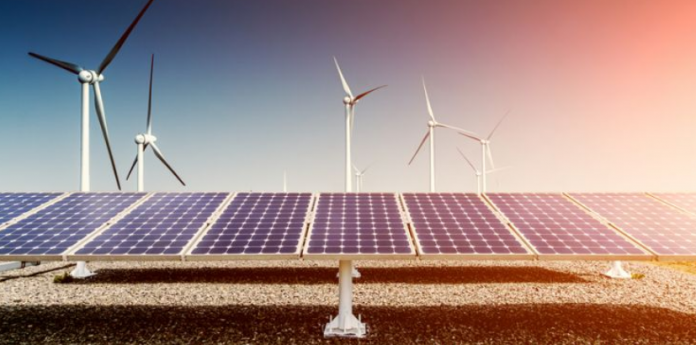Green hydrogen generation could become cost-competitive compared to blue hydrogen by the end of the current decade in parts of the United States with good solar resources, according to researchers from the Massachusetts Institute of Technology.
They presented their findings in “Can Industrial-Scale Solar Hydrogen Supplied from Commodity Technologies Be Cost Competitive by 2030?,” recently published in Cell Reports Physical Science. The MIT scientists claim that solar-powered electrolysis for hydrogen production could reach a price of $2.50/kg or less by 2030.
They modeled an isolated PV-H2 system with no interactions with power infrastructure to sell excess power or buy electricity when the sun is not shining. “Of course, any real-world system may choose to be grid connected, but our analysis provides a limiting case,” they said. Off-grid PV powered electrolysis, however, is considered a viable option, as it would not be subject to exposure to intra-day and intra-year electricity price volatility.
Proposed model
In the proposed model, the researchers optimized PV, electrolysis, energy storage, and other balancing components to guarantee constant hydrogen generation, while considering hourly variations in PV production throughout the entire year.
“This is accomplished by solving an integrated design and operations optimization model that models plant operations throughout the entire year at an hourly resolution,” the team explained. “Using this framework, we are also able to evaluate the trade-offs between energy storage as electricity or H2 and the resulting effect on levelized cost under current and possible future technology cost and performance projections.”
The scientists also conducted a spatial analysis of levelized solar-powered hydrogen production costs across the continental United States, while considering the cost of components, performance parameters, and system factors.
The envisaged scenario considers a drop in costs for electrolysis from around $800/kW at present to $500/kW by the end of the decade. It involves an increase in electrolyzer efficiency, which is expected to grow from current estimates of 58% to 70% on a lower heating value (LHV) basis. It also includes a 33% reduction in capital costs for pressure vessel hydrogen storage, compared with 2020 costs, as well as lower capital costs for geological hydrogen storage.
The researchers said the availability of cheap geological storage makes it cost effective to use more of the PV electricity supply whenever it is available and use the produced hydrogen when it is more needed. “Consequently, system design with geological H2 storage leads to larger relative electrolyzer size, lower PV installed capacity, greater H2 storage capacity, and lower PV curtailment compared with design outcomes with more expensive pressure vessel H2 storage,” the scientists said.
They also noted that regions with a big seasonal difference in PV power generation require larger hydrogen storage capacity compared to regions with smaller seasonal variations.
Prices, policy
Under a scenario in which pressure vessel hydrogen storage prevails, green hydrogen costs are expected to range from $11.80/kg to $2.30/kg across the northwestern and southwestern United States by 2030. If geological storage dominates, the LCOE of solar-powered hydrogen production should be quite lower at between $1.90/kg and $4.20/kg.
“Notably, the much lower cost of geological H2 storage allows smoothening the temporal variations in PV availability at relatively low cost and leads to the average PV capacity factor being a strong indicator for levelized H2 costs,” the scientists said. They added that there is still significant cost and performance uncertainty for electrolysis and hydrogen storage.
Despite the strong potential highlighted for PV-based hydrogen generation, the researchers believe that natural gas without carbon capture might still be a cheaper alternative, with a final LCOE of around 1$/kg by 2030.
“In the absence of any policy incentive (e.g., carbon price) for low-carbon H2 production, there is no economic driver to deploy the PV-electrolysis process, even for the range of future technology costs and performance scenarios investigated above,” they said.
However, for distributed-generation end uses, the cost difference between the two alternatives could be more aligned at around $3/kg. “Low-carbon H2 supply with NG pathways at distributed scale has yet to be demonstrated, and centralized routes will be associated with additional delivery costs which, when completed via dedicated H2 pipelines, are estimated to be around $2/kg H2,” they explained.
“Under a strong climate policy, our analysis suggests that electrolytic production of H2 integrated with large solar PV arrays could, in areas of good solar resources, be cost competitive as an industrial feedstock by 2030,” the academics said.
According to a recent report by the International Council on Clean Transportation, the average price of green hydrogen in the United States would fall from $10.61/kg to $5.97/kg, while the minimum price would drop from $4.56/kg to $2.44/kg. The authors of the study claimed that more optimistic research on green hydrogen prices have only considered system costs associated with electrolyzer capex and the supply of power to operate electrolyzers.






